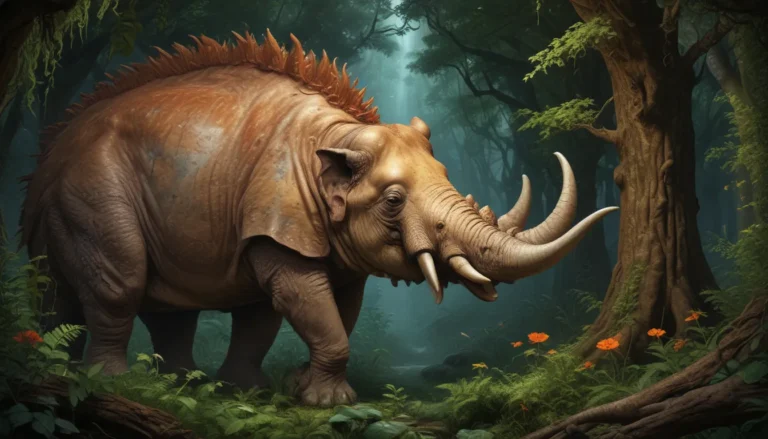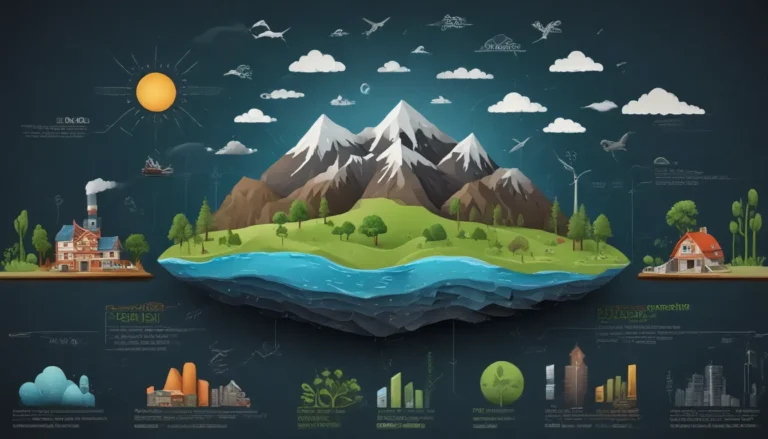A Note About Images: The images used in our articles are for illustration purposes only and may not exactly match the content. They are meant to engage readers, but the text should be relied upon for accurate information.
In the vast realm of biology, ecological niche modeling stands out as a captivating and innovative technique that offers invaluable insights into the distribution and habitats of various species. This powerful tool enables scientists to anticipate how species will respond to environmental changes, making it a cornerstone of conservation efforts. So, let’s embark on a journey to uncover 19 surprising facts about ecological niche modeling, shedding light on its significance in the study of biodiversity and ecosystem dynamics.
Demystifying Ecological Niche Modeling
Ecological niche modeling, also referred to as species distribution modeling, harnesses environmental factors like temperature, precipitation, and land cover to ascertain the suitable habitat for a specific species. Through this analytical approach, scientists can construct models that accurately predict the areas where a species is likely to thrive.
A Broad Spectrum of Applications
From flora to fauna and even microorganisms, ecological niche modeling offers a versatile tool that can be applied to a diverse range of species. Whether it’s tracking the distribution patterns of a bird species or assessing the impact of climate change on disease-carrying mosquitoes, this method provides valuable insights into the spatial dynamics of different organisms.
Navigating Conservation Challenges
Ecological niche modeling plays a vital role in conservation planning and management by pinpointing potential habitats, areas of high species richness, and regions susceptible to invasive species or habitat degradation. This information helps conservationists prioritize their efforts and allocate resources effectively, fostering the preservation of biodiversity.
Embracing the Whole Picture
By considering both biotic and abiotic factors, ecological niche modeling offers a holistic understanding of species distributions. This comprehensive approach delves into not only the physical aspects of the environment but also the intricate interactions between organisms, unraveling the complex ecological tapestry.
Anticipating the Impact of Climate Change
As the effects of climate change continue to reshape habitats, species are compelled to adapt and migrate in search of suitable conditions. Ecological niche modeling serves as a valuable tool in understanding how species respond to these changes, providing critical insights for conservation and management strategies.
Harnessing the Power of Technology
With advancements in technology and data availability, ecological niche modeling can now project species distributions based on future climate scenarios. By incorporating climate change projections, scientists can anticipate how habitats might shift in the years to come, informing proactive conservation strategies.
Fostering Coexistence
Ecological niche modeling unveils potential areas of species overlap and competition, shedding light on interactions between different species. This knowledge is crucial for understanding community dynamics and devising conservation plans that promote harmonious coexistence among diverse organisms.
Tackling Agricultural Challenges
Beyond conservation, ecological niche modeling finds applications in agriculture and pest management. By forecasting the potential distribution of crop pests or invasive plant species, this tool aids farmers and land managers in implementing effective pest control strategies and minimizing crop damage.
Upholding Accuracy and Precision
Reliability is key in ecological niche modeling, as it hinges on accurate data and robust statistical methods. Scientists rely on quality data on species occurrences and environmental variables, while employing various modeling techniques to ensure the accuracy and validity of their predictions.
Pioneering Species Reintroduction Efforts
Through ecological niche modeling, researchers can identify habitats that closely resemble the historical range of endangered species, facilitating the planning of reintroduction programs and supporting the recovery of threatened populations. This targeted approach enhances conservation initiatives.
Embracing Complexity
Ecological niche modeling delves into species interactions, such as predator-prey relationships and mutualistic associations, offering insights into the intricate ecological webs that shape ecosystems. By exploring these dynamics, researchers gain a deeper understanding of the interconnectedness of life.
Envisioning Sustainable Land Management
By analyzing the effects of habitat fragmentation on species distributions, ecological niche modeling informs land-use planning and conservation strategies. Identifying crucial corridors or habitats for maintaining connectivity between fragmented landscapes is essential for preserving biodiversity.
Aiding in Early Detection and Management
Ecological niche modeling plays a pivotal role in predicting the potential range expansion of invasive species by analyzing the environmental conditions under which these species thrive. This proactive approach enables early detection and implementation of management strategies to curb their spread.
Embracing Technological Synergy
Integrating remote sensing and GIS technologies enhances the precision of ecological niche modeling, leading to more accurate predictions. By leveraging satellite imagery and spatial data, researchers can refine species distribution models and make well-informed decisions in conservation efforts.
Navigating Uncertainties
Despite its prowess, ecological niche modeling comes with limitations and uncertainties stemming from data quality, model assumptions, and the dynamic nature of ecological processes. Continuous refinement of models aims to minimize uncertainties and enhance the reliability of this approach.
Evolving Horizons
With ongoing advancements in technology and data availability, ecological niche modeling continues to evolve, refining its accuracy and applicability in species distribution modeling. This dynamic field of research contributes valuable insights to ecological and conservation science.
Safeguarding Biodiversity
At its core, ecological niche modeling plays a pivotal role in understanding and conserving Earth’s biodiversity. By unraveling the factors that shape species distributions and unraveling their ecological requirements, this tool guides conservation efforts, mitigates threats, and promotes the sustainable management of natural resources.
Unveiling a World of Fascination
As we dive into the captivating realm of ecological niche modeling, we uncover a tapestry of surprises and revelations that underscore its profound impact on biodiversity and ecosystem dynamics. From predicting the spread of invasive species to guiding conservation strategies, this method revolutionizes our understanding of the natural world.
FAQs
-
What is ecological niche modeling?
Ecological niche modeling is a technique that predicts the suitable habitat and distribution of species based on environmental variables and species occurrence data. -
How does ecological niche modeling work?
Ecological niche modeling analyzes the relationship between species occurrence and environmental variables to create models that predict the potential distribution of a species in different areas. -
What are the applications of ecological niche modeling?
Ecological niche modeling is used to predict the spread of invasive species, identify habitat for conservation efforts, understand climate change impacts, and guide land-use planning. -
How accurate are ecological niche models?
The accuracy of ecological niche models depends on data quality, quantity, assumptions, and methods used in modeling. They are a valuable tool, but results should be interpreted with caution. -
Can ecological niche modeling be used for all species?
Ecological niche modeling can be applied to a wide variety of species, though its effectiveness may vary based on data availability and ecological characteristics of the species.
As we explore the realm of ecological niche modeling, we unveil a world of wonder and scientific marvels that enrich our understanding of biodiversity and ecosystem dynamics. By embracing this powerful tool, we pave the way for informed conservation efforts and sustainable management of our natural heritage. Let us continue to delve into the mysteries of nature, guided by the insights gleaned from ecological niche modeling.






